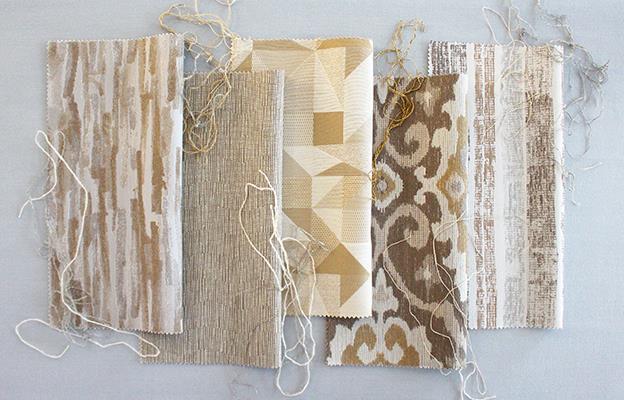Climb aboard and experience the allure of the Orient through pattern, texture and color. The Crypton offering embodies the adventure of traveling on the Eastern & Orient Express throughout Asia.
![]()  The word Orient evokes the images of countries such as Vietnam, China, Korea and Japan. Within these countries, thousands of years worth of visual histories have influenced textiles around the world and continue to inspire us today. The word Orient evokes the images of countries such as Vietnam, China, Korea and Japan. Within these countries, thousands of years worth of visual histories have influenced textiles around the world and continue to inspire us today.
The methods such as Pajogi, Kogin, Ikat, Shibori, Katazome and Zanshi started as a practical need to reinforce garments or to be used as wrapping cloths. Over time, they have transformed into art forms and have crossed borders, impacting other cultures. Each of these methods is conveyed in within the collection.
Pojagi is a traditional Korean quilting practice that is typically square and in a variety of designs. The raw edges are trapped inside the seams so the quilts are reversible. The geometric patterns of the Pajogi's provide inspiration for the designs, Bento and Mango.
![]()  With its' origins dating over a hundred years ago in Northern Japan, Kogin is a time-honored Japanese stitching technique with its close relative being Sashiko, which literally means "little stabs". Originally, the practice of Kogin was used by the ladies of farmer families to strengthen linen fabrics by using cotton threads in unique decorations. The stitches ranged from a running stitch to embroidery, and are showcased in Sarong, Kyoto and Chakra. With its' origins dating over a hundred years ago in Northern Japan, Kogin is a time-honored Japanese stitching technique with its close relative being Sashiko, which literally means "little stabs". Originally, the practice of Kogin was used by the ladies of farmer families to strengthen linen fabrics by using cotton threads in unique decorations. The stitches ranged from a running stitch to embroidery, and are showcased in Sarong, Kyoto and Chakra.
Zanshi is the Japanese definition of "leftover". The Zanshi materials were made from excess threads where their inherent beauty showcased their imperfections. Commonly in striped designs, the artistry is interpreted in Sandal, Rickshaw, and Kilim.
Katazome is a process of dyeing textiles with a resist rice paste applied through a stencil. The appeal of Katazome is that it created an inexpensive way to apply all over motifs to a fabric. Caboose, Shawl, India and Taj emulate the Katazome craft.
![]()  The designs of Visa, Persia and Haiku are expressed through the art of Kasori and Shibori, a resist dyeing approach. Shibori is the binding, twisting, folding and stitching of the fabric. The style matches the properties of the cloth to which it it is being applied. Kasori is the Japanese ikat practice, a resist dyeing of the warp and fill yarns prior to weaving. The pattern is revealed upon completion of the woven fabric. The designs of Visa, Persia and Haiku are expressed through the art of Kasori and Shibori, a resist dyeing approach. Shibori is the binding, twisting, folding and stitching of the fabric. The style matches the properties of the cloth to which it it is being applied. Kasori is the Japanese ikat practice, a resist dyeing of the warp and fill yarns prior to weaving. The pattern is revealed upon completion of the woven fabric.
Pattern names such as Yoga, Sandal, Manga, Rickshaw, Sarong, Shawl, Kilim, Chakra and Bento have Asian roots and have been adopted into the English culture. The origins of the names come from clothing, foods, tourism, and theology. These words have been embraced by our society and are now commonplace to the English language.
The collection meets a minimum of 50,000 double rubs along with a Crypton application for soil / stain repellent and moisture barrier. The textiles are ideal for Hospitality and Senior Living environments.
|